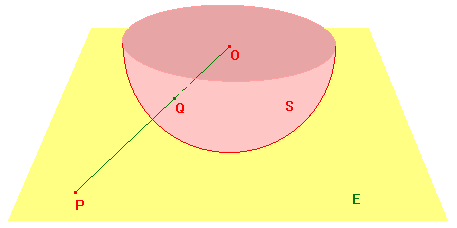can contain lines of arbitrary length.
One way to appreciate that this can happen is to look at a disc model for
the familiar euclidean geometry.

let S be the lower half of a sphere (centre O) touching E,
with the "rim" deleted.
For any P on E, let t(P) = Q, the point where OP cuts S.
This defines a bijection t from E to S, so we can regard
the finite surface S
as a model for euclidean geometry.
for the euclidean plane on a disc centred on O.
Of course, the model "distorts" distances and angles on E.
the point vertically below O
is represented by a
diameter of the disc!